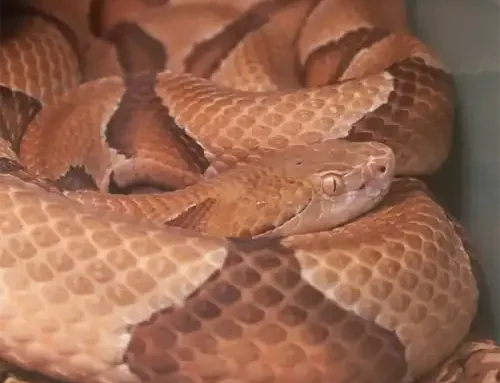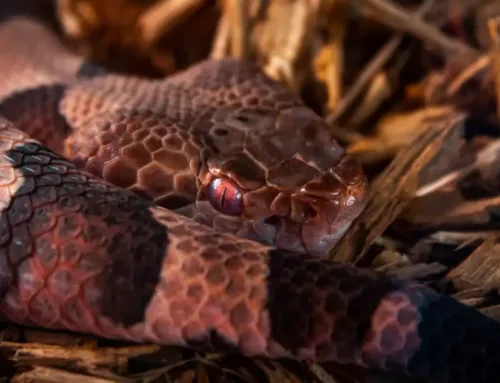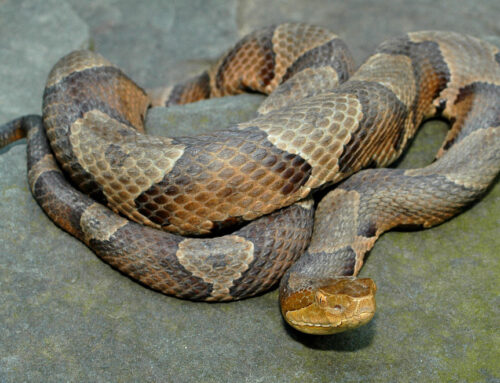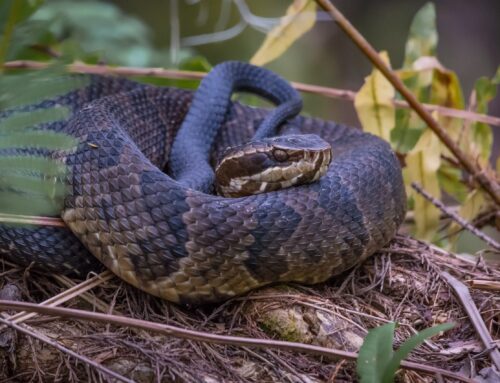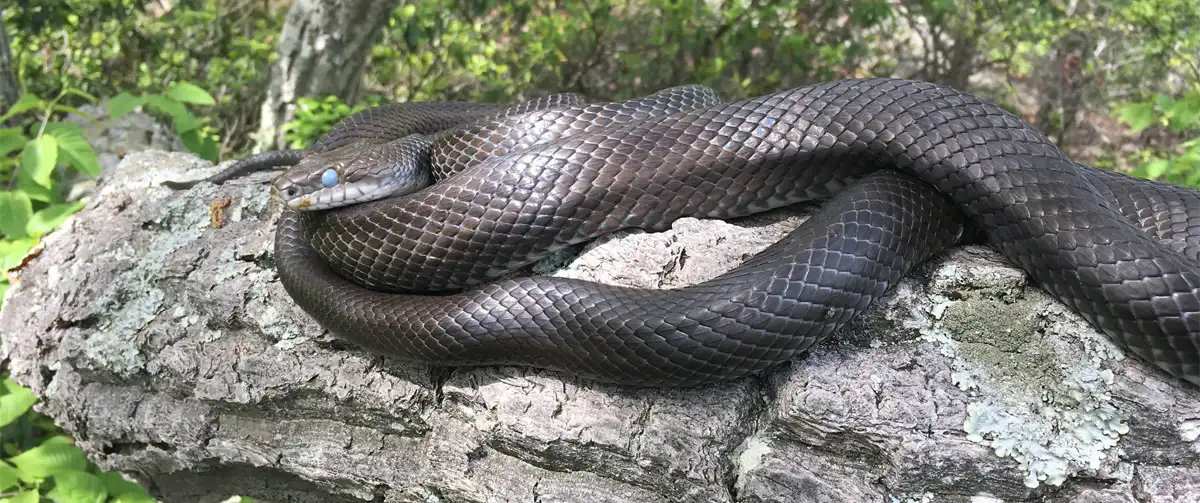
Who amongst us has never shivered at the sight of a snake? Let alone the menacingly named Black Rat Snake. The name itself sends chills down many a spine due to the exotic nature of this surprisingly common creature. But before you let fear override reason, let these mysterious serpents shed their cloak of myths and misunderstandings, uncoiling the real facts about their existence. Time to unravel some snake stories!
Do you wonder why you should bother? Why bother about black rat snakes after all? Rightly so. Yet, it’s the unknown that unnerves us, that fires up our imagination. Are these snakes monstrous as some common-place myths paint them to be? Or are they a misunderstood species, simply trying to go about their day in their wild outdoors? To fear or admire, that is the question here.
The importance of understanding facts from myths is not just about giving way to a sense of relief and wonder, but also about respecting biodiversity. Dispelling myths about these black rat snakes encourages the understanding of the role they play in our ecosystem. By the end of this article, you’ll be brushing away the myths like old cobwebs, replacing them with well-grounded facts. Let’s slither into the world of black rat snakes, shall we? Coming up next is a peek into who these snakes really are in all their glorious authenticity.
What are the Common Myths associated with Black Rat Snakes?
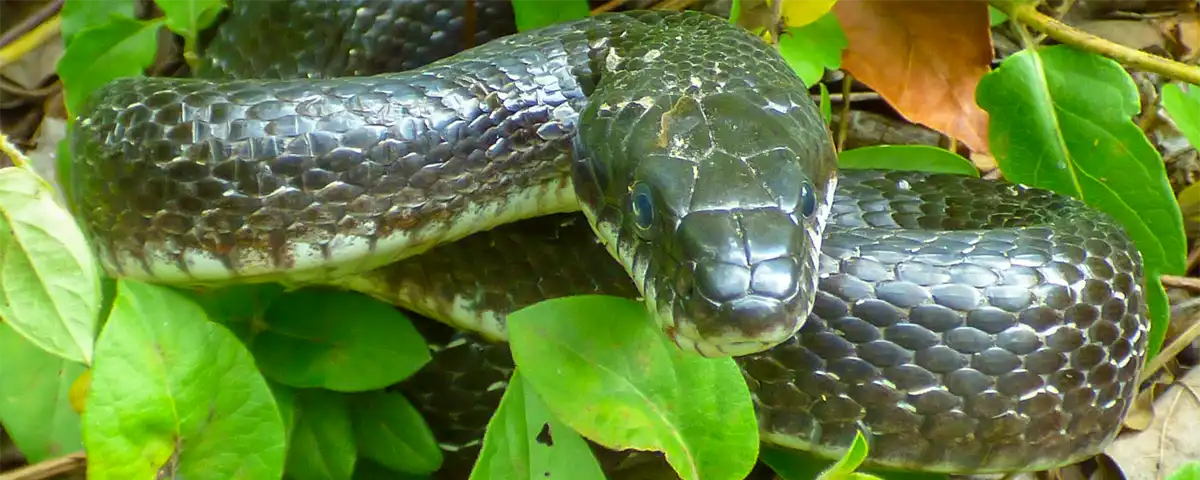
Black Rat Snakes — the name alone might spark fear in the hearts of some, while fascinating others. But do we really know all the facts about these intriguing creatures, or are we held captive by common misconceptions? There are a few specific myths circulating about black rat snakes. One pressing question many ask is: “Are black rat snakes dangerous?” Another is, “Do black rat snakes attack humans?” Some even wonder, “Are black rat snakes poisonous?” Let’s debunk these myths and get to the truth about black rat snakes.
Myth or Fact: Black Rat Snakes Can Grow Up to 15 Feet Long
It’s often heard that black rat snakes have the potential to grow up to 15 feet long. Is this fact or fable? To clear up the confusion, according to the University of Michigan’s Animal Diversity Web, the average length of an adult black rat snake is between 3.5 to 7 feet. So while they may be among the longest snake species in North America, they are still a far cry from reaching a whopping 15 feet, as some myths would have you believe. Comparisons with other snake species, like the reticulated python – which can reach a staggering length of 33 feet according to National Geographic, put into perspective just how exaggerated the myth of the black rat snake’s length can be.
Myth or Fact: Black Rat Snakes Are Aggressive
Another common myth frames black rat snakes as aggressively dangerous creatures prone to launching unprovoked attacks on humans. The truth? These snakes are more likely to retreat than engage when confronted by humans. Black rat snakes’ aggression is mostly defensive, triggered only when they feel threatened. Human attack incidences are extremely rare. The National Centers for Disease Control and Prevention state that only about five deaths per year are attributed to snakebites in the U.S, the majority of which come from venomous species, not black rat snakes.
While any wild animal can react defensively if they feel threatened, black rat snakes are no more aggressive than other non-venomous snake species. By understanding these myths and realities, we can formulate an informed understanding and respect for black rat snakes.
Why do these Myths Exist and How do they Influence our Perception?

The myths and misconceptions about Black Rat Snakes have significant historical and cultural roots dating back hundreds of years, spreading fear and distrust towards these creatures. Many of these tales were born from a combination of natural human fear of snakes, lack of understanding about their behavior, and cultural stories passed down through generations.
One common myth is that Black Rat Snakes are venomous and fatal to humans, a misconception that stems from our instinctive fear of the unknown. This perception is not only deeply ingrained but also has severely influenced our interaction with these unique creatures. Consequently, these snakes are often met with panic and hostility, further promoting the vicious cycle of fear and misunderstanding.
| Common Myths About Black Rat Snakes | Origin of Myths | Impact on Human Interaction |
|---|---|---|
| Black Rat Snakes are venomous | Fear of the unknown | Panic and avoidance, leading to possible harm to the snakes |
| Black Rat Snakes are aggressive | Misinterpretation of defensive behavior as aggression | Unnecessary fear, leading to hostility towards the snakes |
| Black Rat Snakes are harmful to pets and livestock | Confusion between black rat snakes and other harmful snake species | Prejudicial killing of the snakes, disruption to the ecosystem |
This table illustrates the most common myths about Black Rat Snakes, their origin, and how they have influenced our interactions with them. (Source: Maryland Department of Natural Resources).
The visual impact of such myths and misunderstandings dramatically alters our perception of these creatures, often leading to unnecessary killing and disruption of the delicate ecosystem balance we share with them. Recognizing and dispelling these erroneous beliefs is a critical step towards promoting coexistence and respecting each creature’s role in the ecosystem.
Apart from affecting our interactions, these myths about Black Rat snakes also distort our collective consciousness towards these species. Imagine the potential for peaceful cohabitation if we could erase this fear based on mistaken beliefs!
Now that we’ve understood where these myths come from and how they shape our interaction and perception towards Black Rat Snakes, let’s segue into discussing the reality about these misunderstood creatures.
What is the Truth about Black Rat Snakes?
As we start to peel back the layers of myths that surround the mysterious black rat snake, it’s essential to remember that facts hold the real power. One of those common misperceptions that needs debunking is the idea that all black rat snakes are venomous. The truth is, black rat snakes are nonvenomous constrictor snakes that prefer to avoid human interaction.
Another myth that represents a significant disconnect from reality is the assertion that these snakes are aggressive. On the contrary, black rat snakes are known to be quite docile and will often freeze or try to slither away if they feel threatened.
In line with this, there’s a widespread belief that black rat snakes are invasive pests, wreaking havoc wherever they go. However, black rat snakes are not only native to America, but they’re also beneficial to the ecosystem due to their role in controlling rat and mouse populations.
We also need to dispel the myth that reintroducing black rat snakes into other areas can help balance the ecology. Remember, in some regions such as the State of Virginia, it’s illegal to move snakes without proper authorization – often for good reasons related to maintaining the balance in native wildlife populations.
In the spirit of breaking down these and other myths about black rat snakes, let’s acknowledge the importance of spreading correct information. Every time we share a snippet of fact-checked knowledge, we chip away at the walls of misinformation that have shrouded these creatures.
In conclusion, our perceptions and actions towards wildlife mirror our greater responsibilities towards the natural world. Understanding rather than fearing is where we need to guide our focus towards. After all, the beauty of nature lies in its diversity, and each creature, including the black rat snake, has a unique role to play in Earth’s grand orchestra.
This doesn’t just end here. Stay tuned for more such enlightening articles on our wildlife friends as we continue busting myths and nurturing a deep-seated respect for all creatures. Your interest and support power this mission.
| Myths About Black Rat Snakes | Actual Facts |
|---|---|
| Black Rat Snakes are venomous | They are nonvenomous constrictors |
| They are aggressive | They are docile and avoid confrontations |
| They are invasive pests | They are vital to the ecosystem |
| Reintroducing helps ecology | It’s actually illegal in some regions |
Remember, accurate information today leads to responsible action tomorrow! Keep learning, keep sharing! Let’s give our silent, slithering friends the respect they deserve. They might not be able to speak up, but we sure can!
